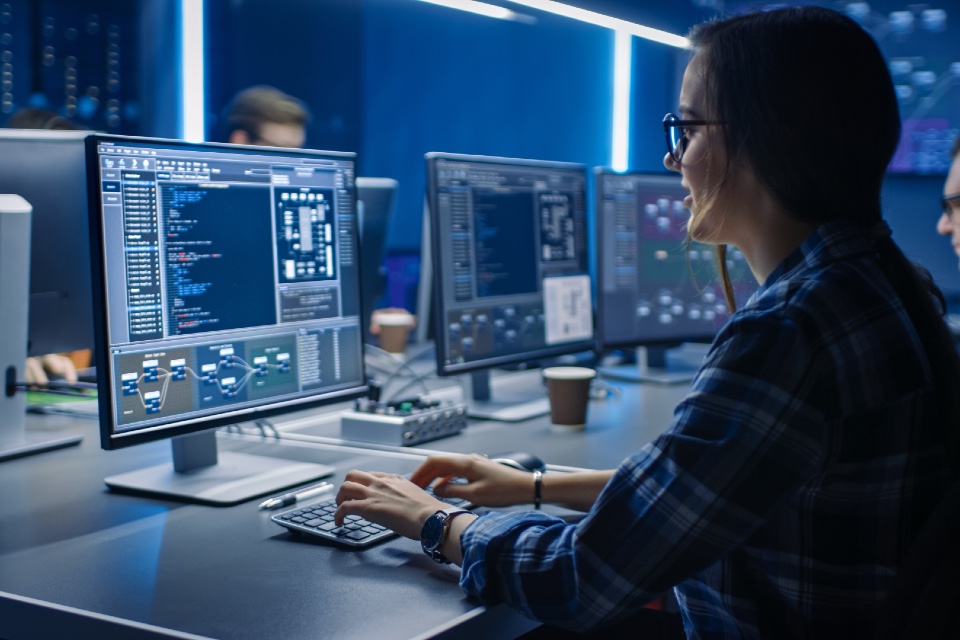By Personio
As companies are reconsidering their business models, HR is evolving from staff administration to acting as a partner at eye level with senior management, and working remotely has become entirely normal. Nothing is the same as it was before the crisis. Allow us to share how HR managers can guide employees safely towards the new normal, what sort of strategy you might want to deploy as employees return to their offices, and what essentials must be established to emerge successfully from the crisis.
The cat has been let out of the bag, and the “future of work” that the business world has talked about for so long has suddenly become reality. The corona crisis very suddenly confronted many companies with a scenario they had long avoided: employees working from home and collaborating via digital technologies and tools. A perfect remote work setup – provided that the right digital processes have been established.
HR as a Strategic Partner
In recent weeks, HR managers have come to play very special roles for employees: from first responders and trusted advisors, to coaches and motivators. But they also act as strategic partners for executive management. After all, how can business be expected to keep going if its most important resource – employees – aren’t able to work properly? If processes haven’t been digitalized, if internal communications are inadequate or people go stir crazy working from home?
Throughout the past few weeks, HR had to adapt to changed environments within companies, find new approaches to working efficiently and set new priorities. At the same time, the focus has shifted towards strategic issues such as employee health, digitalized processes, a strong corporate culture and sustainable talent management. And all of these aspects are more than just a brief chapter in companies’ annals – they mark the beginning of an entirely new era. That’s why it is important for HR to get ready for the “new normal” now.
The 7 Cornerstones of the New Normal
1) Working Remotely
One thing that is clear is that working remotely will become a fixture in everyday corporate life. HR managers need to not only find ways to keep supporting flexible approaches to work in the future, but also to ensure transparent communications and to facilitate virtual collaboration. Issues such as digital recruiting and remote onboarding will also become more and more important in the process.
2) Employee Experience
Remote work setups established due to the corona crisis have illustrated very clearly that absolutely nothing will work without motivated, healthy employees who feel appreciated. Zilch. Nada. A key question regarding our future is therefore, how can individual employees’ needs be met?
3) Corporate Culture
If companies are to be steered safely through a crisis, they need a set of trusted values for guidance. The crew must know exactly which principles their actions should align with. Otherwise the company may founder. A supportive and unifying corporate culture is even more important where employees work from different locations.
4) Employer Branding
Many companies are currently working very hard just to stay afloat. The way they treat their employees in the process will be closely linked to their employer brand for quite some time. The crisis works like a spotlight that mercilessly reveals every flaw, and that’s why it is essential for companies to be careful how they present and put into practice their corporate culture, both now and in the future.
5) Developing New Capabilities
Given that working remotely will be entirely normal in the future, relevant skills such as flexibility, adaptability and effective teamworking abilities are very important. Companies need to drive the development of these skills.
6) Physical and Mental Health
With remote work, employees’ physical and mental health will continue to be highly important for HR departments. An important issue to be addressed in the future will be online fatigue, i.e. people being fed up with sitting in front of a screen.
7) Diversity and Inclusion
The ability to work from anywhere will increasingly open up new job opportunities for culturally diverse employees all over the world. That’s why HR needs to think about how teams made up of very diverse employees can collaborate effectively and smoothly.
Companies’ new normal will be based on the following:
- Engaging with employees as a company’s heart and soul that needs to be supported
- Sound digital processes that support remote work and leave HR managers time and space for focusing on employees and issues of strategic importance
Pathways Back Into the Office
As employees gradually return to working from their offices, nothing will be the same as before. Small talk with a face mask? Hand sanitizers next to the coffee machine? There’s much more to it. The corona pandemic might impact on how people collaborate at a fundamental level, including office design. But first, HR managers need to develop appropriate strategies for getting employees working remotely back into the office.
A Possible Exit Strategy Scenario
1) Preparatory Stage
First of all, hygiene precautions must be taken to keep the risk of infection as low as possible. That means:
- Provide adequate supplies of sanitizer and face masks
- Ensure that desks, light switches, door handles, etc. are sanitized regularly
- Provide for alternatives to employees using public transportation (e.g. bicycle and scooter rental services, car sharing)
- Develop hygiene guidelines for handwashing and social distancing
Reorganizing your office is also part of the preparatory stage.
- How many employees are allowed to work in the office at any one time? How many are allowed to be on each floor?
- How can the use of shared spaces such as meeting rooms, break rooms or toilets be organized? What rules apply for visitors?
Finally, employees’ actual return to their workspaces needs to be planned.
- Which departments or teams will return first?
- Will there be a rotation of employees, e.g. one group of ten sales staff will work in the office on Mondays and Wednesdays and another on Tuesdays and Thursdays?
- Are there individual employees, e.g. in office management, who should return to the office right from the start?
2) Communication Stage
Once the above issues have been clarified, the “home office exit plan” needs to be communicated to employees. It is essential that the plan for employees’ return to the office is shared as straightforwardly and transparently as possible.
- Who will return to the office when?
- Who will (initially) not be permitted to return to the office (e.g. employees with prior conditions, those over 60 or pregnant employees)?
- What social distancing rules and guidelines apply as people return to the office?
3) Return Stage
Employees’ actual return to their workplace can be staged. At the 6th CIO Symposium on the corona crisis, the CIO of a German DAX-listed business introduced the company’s internal strategy as follows:
- As a first step, no more than 30 percent of employees will return to their offices.
- Four weeks later, they will be gradually joined by more and more of their colleagues, until half of the staff have returned to the office.
- Another four weeks later, it is hoped that all employees will again work from their offices, unless new government restrictions have been imposed.
Pathways Out of the Crisis
Companies need to work with their HR managers to develop strategies for the new normal if they are to emerge successfully from the crisis in the long term. Focusing on digitalization is a key aspect of this process.
Digitalization: Understanding the Crisis as an Opportunity
“The corona crisis has illustrated very clearly just how important digital technologies are for business, administration and society. The crisis is a wake-up call that we really need to drive digitalization forward now,” said Bitkom president Achim Berg in an interview with the German newspaper “Die Zeit.” Companies are now able to reinvent their business models and raise the service they provide to the next level by leveraging digital technologies. Those who make sure that their customers are still king even in times of crisis will benefit from increased customer loyalty once we settle into the new normal.
Digitalization also plays a decisive role for companies’ core processes. HR departments need digital support, as once the crisis is over, they will have to deal with issues such as employee retention, workforce planning and recruiting more than ever before. New processes for collaborating within companies will need to be defined and remote onboarding routines established. But HR departments drowning in administrative tasks won’t be able to do this properly.
Workplace Law Tools for the Crisis
In the long term, employers will also need to answer a number of workplace law questions for the time after the crisis. How will they handle ongoing costs, above all personnel costs? What if short-time work alone doesn’t cut costs sufficiently in the long term? The German legal firm Pusch Wahlig Workplace Law has come up with a number of useful points to help companies prepare for the time post-Covid.
- “Rotation” of short-time work
- Works agreements for companies with works councils
- Waiver of contractual leave entitlements
- Using variable compensation
- Voluntary salary cuts/deferrals









